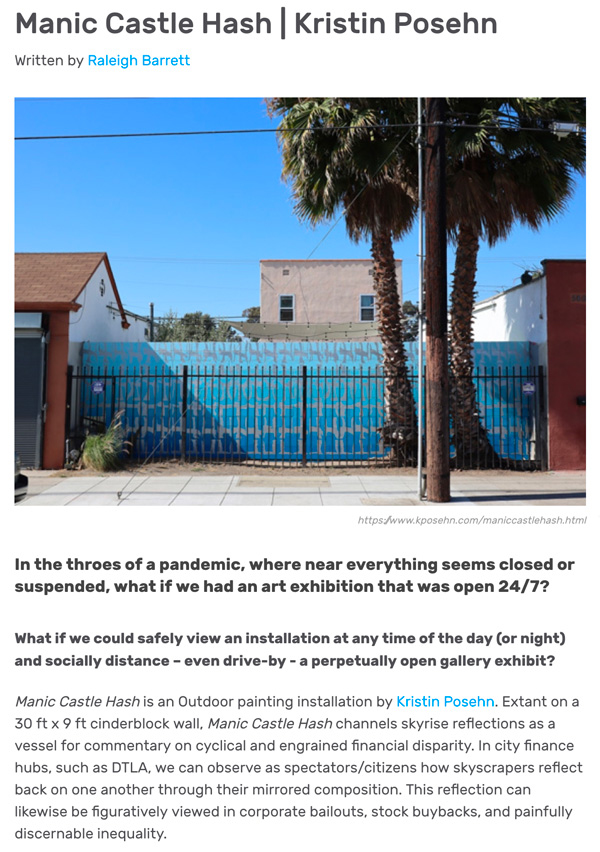Review of ‘SUBSTRATA’ by Matt Stromberg and Elisa Wouk Amino
A review of SUBSTRATA written by Matt Stromberg and Elisa Wouk Amino was included in Your Concise Los Angeles Art Guide for February 2021 at Hyperallergic, and is available for view here.
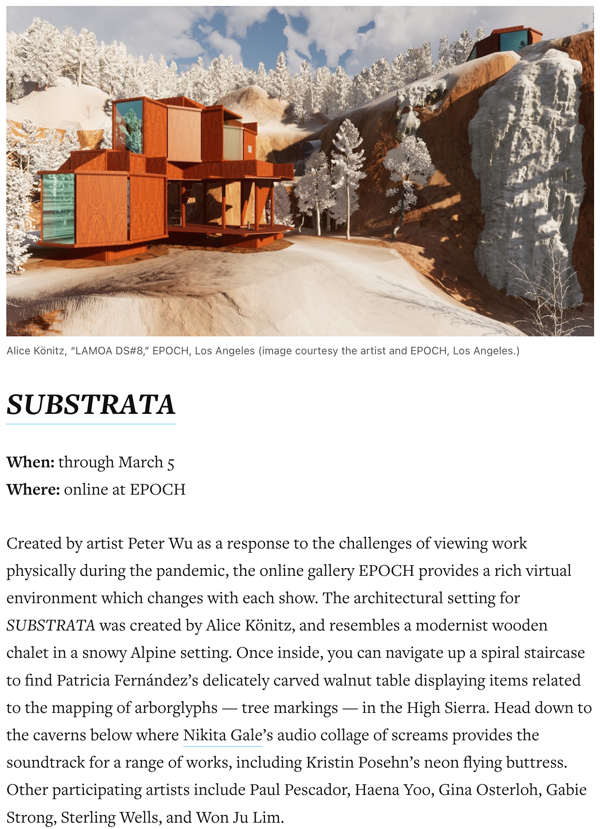
A review of SUBSTRATA written by Matt Stromberg and Elisa Wouk Amino was included in Your Concise Los Angeles Art Guide for February 2021 at Hyperallergic, and is available for view here.

Thank you to Raleigh Barrett for the thoughtful questions and write-up here.
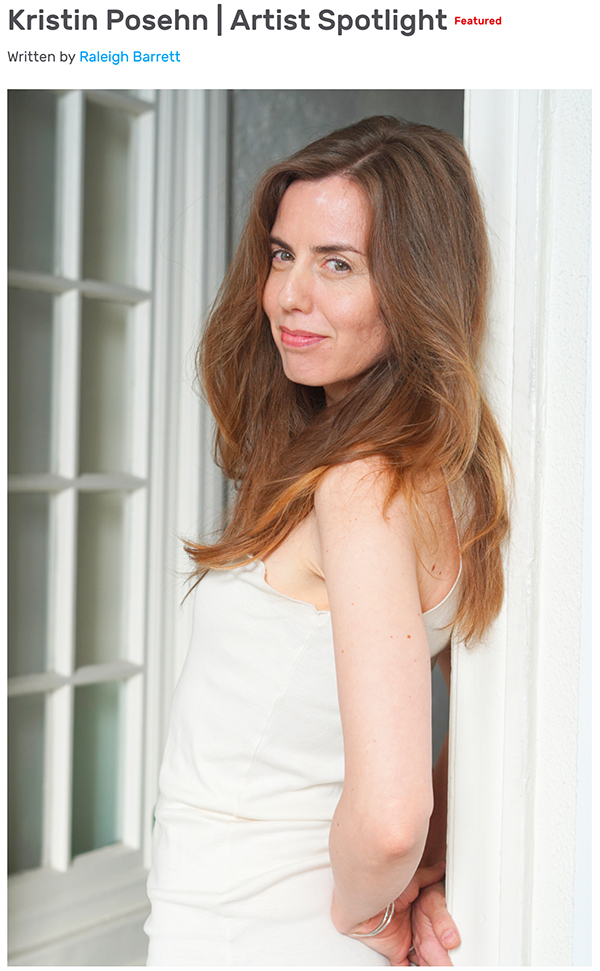 Photograph by Deborah Jaffe
Photograph by Deborah JaffeA review of SUBSTRATA written by Lindsay Preston Zappas was published in KCRW Arts & Culture Stories, and is available for view here.
The architecture for the current show, “Substrata” — which is set in a nondescript snowy glade — was designed by Alice Könitz of Los Angeles Museum of Art (LAMOA), another artist-run, shape-shifting exhibition venue. Navigating through Könitz’ virtual pavilion is a warm, light-filled experience that delights with angular and wood-grained surfaces, and surprisingly sends the viewer down a series of spiraling staircases until you finally arrive in a looming cave, artwork dappled throughout. While artworks are splayed throughout all of the many above-ground and sub-terrain levels of the structure, the bottom cave level feels particularly meta — a sound piece by Nikita Gale layers echoed screams, highlighting the eeriness of the space, and a neon work by Kristin Posehn is in the shape of gothic architecture’s flying buttress, yet here it is non-functional, buttressing nothing. – Lindsay Preston Zappas
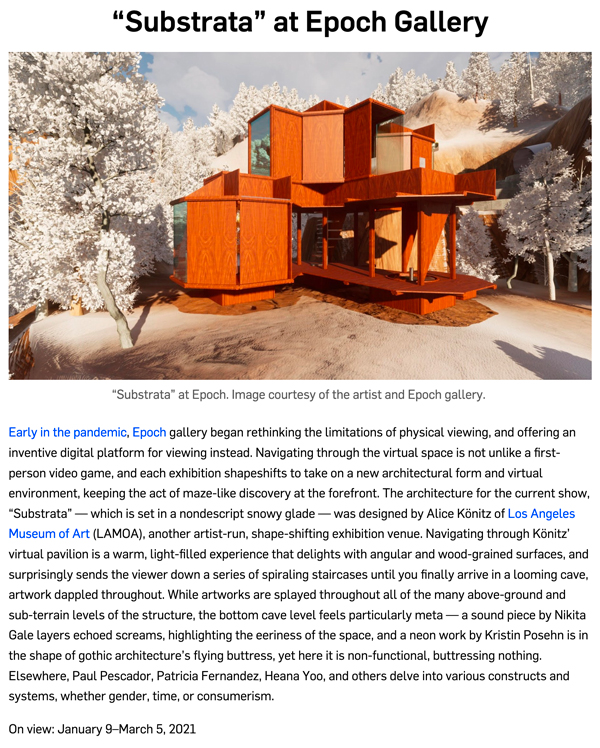
SUBSTRATA is a group exhibition presented by EPOCH, in collaboration with the Los Angeles Museum of Art (LAMOA).
Venue: EPOCH
Exhibition dates: January 9 – March 5, 2021
Artists: Patricia Fernández, Nikita Gale, Won Ju Lim, Gina Osterloh, Paul Pescador, Kristin Posehn, Gabie Strong, Sterling Wells, and Haena Yoo.
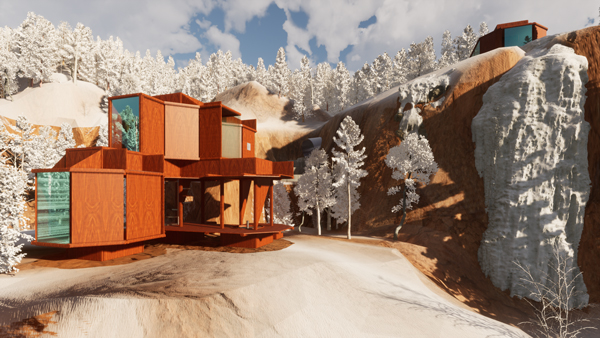
A review of Manic Castle Hash written by Raleigh Barrett was published by NoHoArtsDistrict.com, and is available for view here.
Extant on a 30 ft x 9 ft cinderblock wall, Manic Castle Hash channels skyrise reflections as a vessel for commentary on cyclical and engrained financial disparity. In city finance hubs, such as DTLA, we can observe as spectators/citizens how skyscrapers reflect back on one another through their mirrored composition. This reflection can likewise be figuratively viewed in corporate bailouts, stock buybacks, and painfully discernable inequality.
The ‘Manic Castle’ can be interpreted as this never-ending (even accelerating) income inequality. The “Hash” portion of Manic Castle Hash refers to the mathematical method for compressing information. In a departure from encryption, hashed information can’t be returned to its original form. From contracts to password storage, hashing is used for a variety of tech means. The almost step-and-repeat-like form of skyscrapers reflecting on one another is a lucidly interpretable visual of the artwork. – Raleigh Barrett
